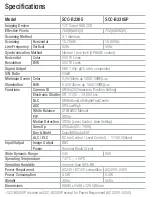
11
Installation and Maintenance Instructions
Selectone Model PS600
NOTE:
For access control applications, batteries are optional.
When batteries are not used, the loss of ac will result in the loss of
output voltage.
The PS600 should be installed with the National Electrical Code
NFPA 72 and in accordance with any local regulations. Use only
18 AWG wire for all power connections (battery, dc output). Use
22 AWG to 18 AWG wire for signaling outputs (ac and low battery
supervision).
NOTE:
In accordance with NFPA72, the wires to the batteries
do not have to be supervised provided that they are in conduit or
equivalent to prevent mechanical injury.
For 120 Vac or 240 Vac power Class I conductors:
Use one of the two knockouts located at the upper right side of the
cabinet near the two transformers.
For the non-power limited 24 Vdc or 12 Vdc output conductors:
Use one of the two knockouts in the top, either the middle or the
left side of the cabinet or the knockout in the middle of the left
side. Make sure that all power-limited fire protective signaling
conductors are segregated from electric light, power, Class I, or
non-power limited fire protective signaling conductors by more
than 0.25 inch inside the power supply cabinet.
Determining the Total Ampere-Hour Capacity
The PS600 battery consists of two 12-volt, sealed lead-acid
batteries connected in series. These batteries supply emergency
power to units in a SelecTone system or other devices during
electrical power failures. The power supply includes a built-in
charger for the batteries.
The length of time that the batteries can supply power depends
upon the amount of current drawn by the loads. In normal fire
alarm systems, the two time frames are used: twenty-four hours
on standby, followed by five minutes of alarm, or sixty hours on
standby, followed by five minutes of alarm.










































